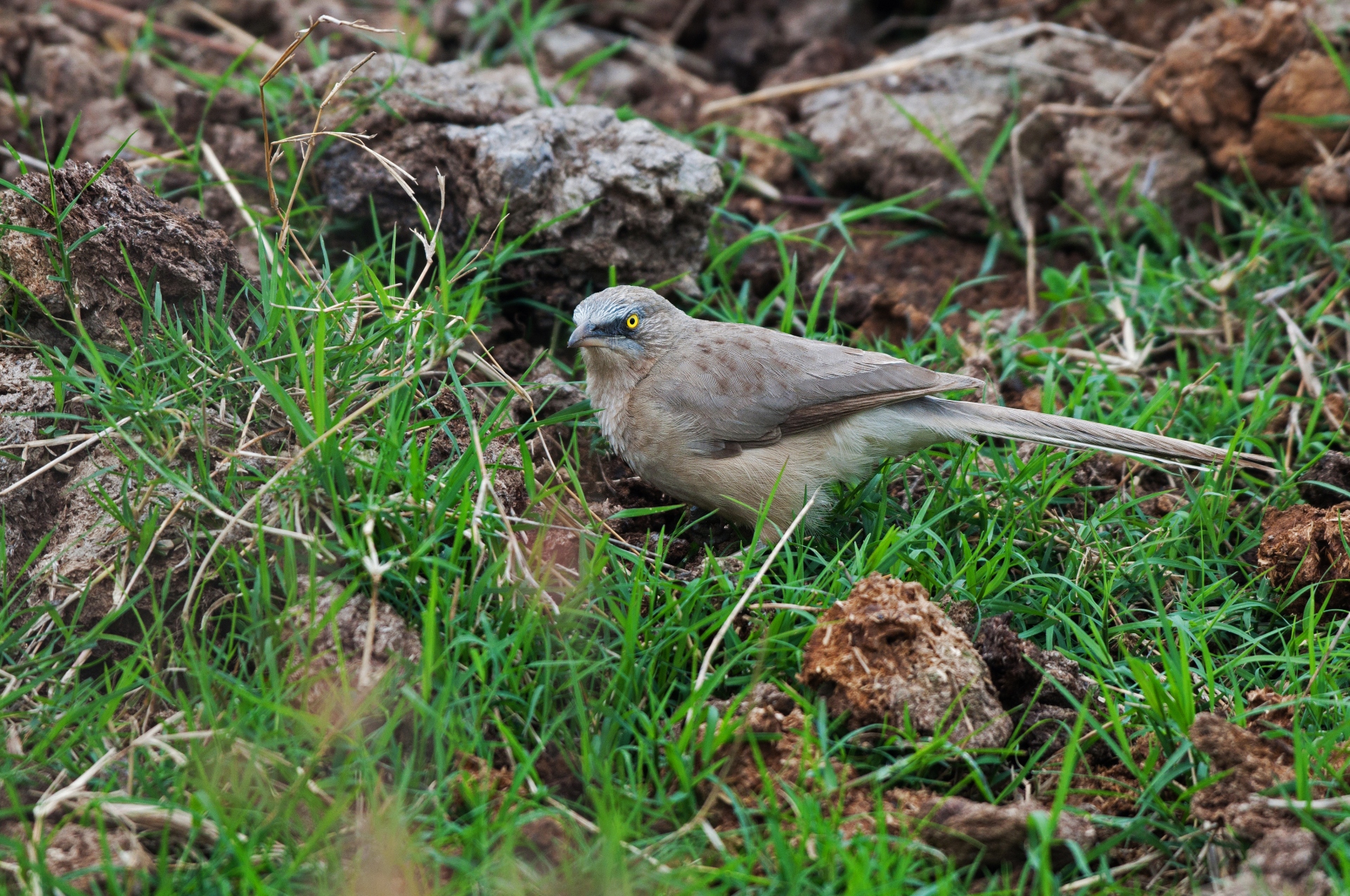Urban landscapes are different from natural habitats in one significant way: the presence of manmade structures such as concrete buildings and tarred roads. These structures fragment the landscape, leaving little space for other species to co-exist, even those as small as birds.
To survive, our avian friends are forced to adapt to these new conditions, or leave altogether. Many have moved away to semi-urban and rural areas, leading to a loss of biodiversity and a tipping of the ecological scale. However, there are a few species that have stuck around. The large grey babbler is one.

Large grey babblers have yellow eyes, a pale forehead, and a black patch near the beak, giving them a perpetually angry look, much like the Angry Birds in the popular mobile phone game. Photo: Abhishek Gulshan
As its name suggests, the bird is one of the larger members of the babbler family, found in and around Delhi’s green spaces. They are primarily scrubland species, with a special fondness for desi babool trees (Acacia nilotica). In the capital, flocks have been observed in Jahanpanah City Forest, Asola-Bhatti Wildlife Sanctuary, Sanjay Van, and the woods and deer park in Hauz Khas. At one point in history, these isolated bits of green may have been a contiguous scrub forest inhabited by diverse species.
In addition, the large grey babblers also inhabit parts of the Okhla Bird Sanctuary and a few areas around the Sultanpur Bird Sanctuary. These areas are primarily wetland reed habitats, but do have some acacia trees at the periphery, which is where the large grey babblers can be found. Closer to the water, flocks of striated babblers can be seen; they are a close (and smaller) cousin of the large grey babbler and prefer marshy habitats with tall grasses.
Interestingly, Delhi’s large grey babblers show pronounced differences in behavior and feeding habits when compared to rural populations. These changes have been linked to urban factors such as air pollution, noise, artificial light, and a change of food sources. Despite these minor adaptations, the large grey babbler is nowhere near being an urban bird, like pigeons, crows, or sparrows. They rarely leave their home base — urban settlements don’t have much to offer them — except to move to another scrub forest, as a result of territorialism.
For now, the large grey babbler is thriving, despite the prominent degradation of its habitat. What remains to be seen, is whether (and how) future generations will evolve as a response to their urban environment.